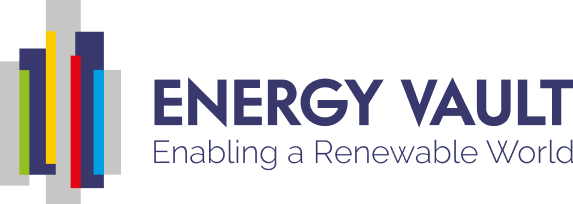Date: October, 2023
A few weeks ago, I had the great opportunity to visit India and meet with several of the country’s largest energy and industrial companies. It was a highly productive trip that leaves me optimistic about India’s path towards decarbonization and Energy Vault’s role in India’s clean energy transition. But we need to move fast.
India is currently the third largest emitter of carbon dioxide, behind only China as the largest emitter, followed by the United States. India’s rapid economic growth is establishing the country as an economic powerhouse and lifting millions of people out of poverty, but with that growth comes increased energy demand and emissions as coal-based power generation currently accounts for about 70% of the country’s electricity production. In fact, India has the world’s third largest power demand at 1,375 TWh annually and the International Energy Agency expects this to increase at 4.7% per year until 2040, the greatest increase in the world.
As I met with company leaders in New Delhi, Mumbai and Ahmedabad Gujarat, it became abundantly clear that the opportunity for renewable energy and energy storage in India is massive. India has a target of 500 GW of renewable energy capacity by 2030 and is making rapid progress towards this goal, adding renewable energy capacity at a CAGR of about 17%. To achieve this target and net-zero emissions by 2070, India must add an energy storage capacity of more than 200 GW by 2040, which is the largest of any country.
Energy storage is a critical component of India’s energy transition, and Energy Vault is positioned to play an important role in scaling up the country’s storage capacity. India’s energy storage capacity today is made up of mostly pumped hydro storage (PHS) and battery energy storage systems (BESS). However, as the nation continues to scale its storage capacity, it will need to look beyond these two options in order to meet its ambitious volume and cost targets.
We received consistent feedback from companies like TATA Power and NTPC that lithium-ion technology is still considered too expensive for many of India’s storage needs, particularly given battery’s capacity degradation and comparatively short technical life. Additionally, most lithium-ion battery manufacturing occurs abroad, limiting the domestic value-add for the Indian economy.
For its part, pumped hydro storage is a highly capital-intensive endeavor with new installations often bringing substantial social and environmental tradeoffs. This said, India’s large existing base of PHS means there is significant industry familiarity and expertise with gravity-based technology. The long technical life and low LCOS (levelized cost of storage) over a 30-40 year deployment for Energy Vault’s gravity-based systems is an attractive and complementary addition to Indian utility and power companies’ existing portfolios.
Specifically, our EVx™ Gravity Energy Storage System (GESS) presents an ideal solution for India’s long-duration energy needs. Currently being deployed for the first time in Rudong, China, the EVx™ decouples power and energy, allowing for cost-effective long-duration energy storage at constant power output. This is possible while maintaining a round-trip efficiency rivaling that of PHS without the need for specific topography. Each EVx™ is also right-sized to our customers’ specific power and energy use case, something not easily achieved with traditional PHS construction. This type of project customization showcases our commitment to working with customers to develop solutions that are tailored to their specific needs. This customer-centric approach extends beyond gravity-based technology to our diverse and growing mix of energy storage hardware solutions, including battery and green hydrogen storage, further bolstering our ability to provide the best-fit solution for every customer use case.
Common to each of the large customers with whom I spoke was the need for an advanced Energy Management System (EMS) capable of supporting the full value chain of energy market use cases, from bulk energy shifting, to technical grid support services, to optimized economic dispatch. Energy Vault’s technology-agnostic VaultOS™ EMS software has been engineered for this very purpose, capable of working across energy storage and generation hardware in order to manage customers’ increasingly complex asset portfolios.
The VaultOS™ software suite is already central to Energy Vault’s existing project pipeline, from our 25MW/100MWh gravity-based EVx™ deployment in Rudong, China, to multiple 100MWh+ battery projects in North America, to the world’s largest green hydrogen energy storage asset, currently in development in California. In light of this, it's worth noting that VaultOS™ has been proven across geographies and asset types and can be tailored to assist the Indian market as it expands.
In 2022, we announced an agreement with NTPC, India’s largest power generating utility, with the objective to collaborate and formalize a long-term strategic partnership for deployment of our EVx gravity energy storage technology and software solutions. Our partnership with NTPC will also promote a circular economy, as coal ash from India’s retired coal plants can be used for manufacturing the EVx composite blocks. Our meeting with NTPC in India further advanced our collaboration and plans for commercial deployment of our energy storage technologies.
As I wrapped up my visit, I couldn't help but feel inspired by India's dedication to achieving a sustainable future and the significant opportunity for Energy Vault to help India meet its climate targets. As the only company with a mix of short, long and ultra-long duration energy storage technologies, we are poised to partner with companies across India’s energy and industrial sectors to deliver customized energy storage solutions in support of India’s energy transition.
Finally, I had the pleasure of speaking with CNBC TV18 while I was in Mumbai. To hear more about my views on energy storage and its role in helping India achieve its decarbonization goals, please watch the interview at the following link: Working In India With NTPC, Tata Power On Energy Storage Opportunities: Energy Vault | CNBC TV18 - YouTube
Rob Piconi
Chairman, Co-Founder, and CEO
Enabling a sustainable world with renewable energy.
Read the next post:
Construction Speeds Up on Zhangye City's First Gravity Energy Storage

